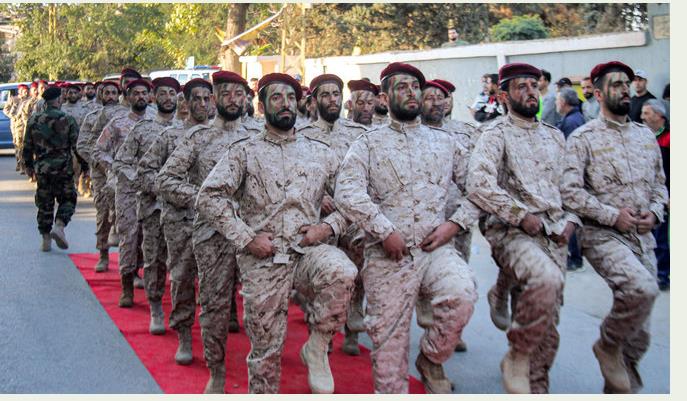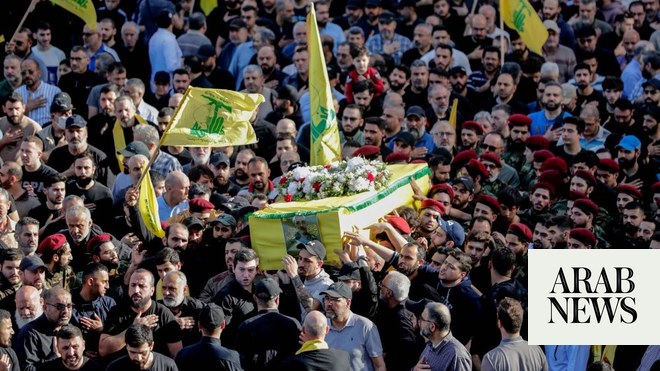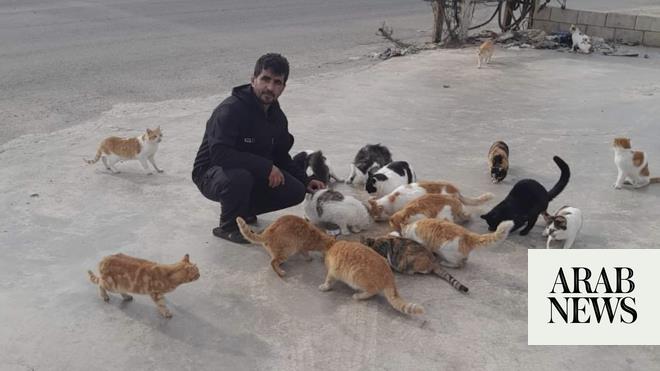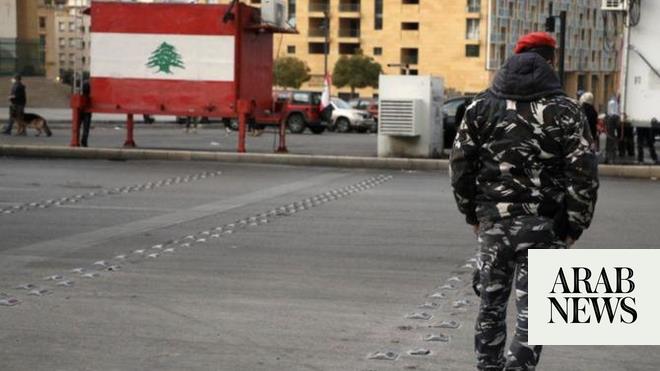
Latest Israeli drone attack killed Mohammed Hamed Jabara, a leader in Al-Jama’ah Al-Islamiyah
466 dead, thousands of homes razed in more than 9 months of conflict; value of damage estimated at $1.7 billion
Hezbollah leader Nasrallah has warned that the group will target new Israeli settlements if Israel continues to ‘target civilians’ in Lebanon
BEIRUT: Israel’s assault on Lebanon extended beyond the southern border area to western Bekaa on Thursday, resulting in at least two deaths in separate attacks.
In the morning, an Israeli drone targeted an SUV on the road to the town of Ghazze in western Bekaa, resulting in the death of its driver.
The target was identified as Mohammed Hamed Jabara, a leader in Al-Jama’ah Al-Islamiyah, or the Islamic Group. He hailed from the town of Qaraoun in western Bekaa.
He was an active militant in the party’s military wing, the Al-Fajr Forces, which is allied with Hezbollah in the confrontation with Israel.
According to a source from his hometown, Jabara had previously been pursued by Israel “due to his resistance activities and had faced multiple threats and assassination attempts, which only succeeded now.”
The Al-Fajr Forces described Jabara as “one of their leaders” in an obituary.
Hamas’ military wing, the Al-Qassam Brigades, also mourned Jabara as “one of their leaders.”
In another incident on Thursday morning, an Israeli drone targeted a vehicle on the road to Jbal El-Botm in the Tyre district in the south.
The driver tried to escape the drone but was pursued and killed by a missile.
He was identified as Hussein Ali Mhanna, a 40-year-old Hezbollah member from Jbal El-Botm.
In a third attack, an Israeli drone targeted a car between Hanniyeh and Zibqin, injuring a Hezbollah member and another passenger.
The Israeli army conducted a sweep with machine guns toward Wazzani and targeted Chihine with a guided missile.
Israeli airstrikes and artillery also hit Aita Al-Shaab, the hills extending between Taoumat Niha and the highlands of Ain Al-Tineh in western Bekaa, without any reported injuries.
The intense Israeli escalation followed Hezbollah Secretary-General Hassan Nasrallah’s threat to “target more settlements if Israel continues targeting civilians.”
The Israeli response was “a message demonstrating the army’s capability to continue killings and its ability to monitor Hezbollah field leaders, and know their identities and type of missions,” said one political observer.
In a statement, the Islamic Group held Israel responsible for Jabara’s “cowardly assassination.”
The attack “will not deter us from performing our role and duty in defending our land and people in the south, nor from supporting our people in Palestine,” the party said.
Hezbollah responded to the Israeli attacks with hostile operations targeting military sites, including “newly installed espionage equipment” on a crane at the Hadab Yarin site.
Israeli jets broke the sound barrier over the south more than four times, causing panic and damage to homes, including the partial collapse a roof in the town of Kfar Tebnit. Residents escaped without injury.
The military escalation has led to increased casualties in southern Lebanon as Israel pursues an aggressive strategy against Hezbollah.
The number of civilian casualties exceeded 107 as of July 14, a report from the UN Office for the Coordination of Humanitarian Affairs said.
Total casualties amounted to 466, including Hezbollah-affiliated military personnel.
More than 98,000 people have been internally displaced in southern Lebanon after artillery reached within 12 km of the Blue Line.
Almost 98 percent of the displaced hail from the Bint Jbeil, Marjaayoun and Tyre districts, the OCHA report said.
Israeli airstrikes have also reached deep into the country, extending up to 100 km from the Blue Line.
The OCHA warned of severe damage to southern Lebanon’s water, electricity and telecommunications infrastructure, and roads.
Maintenance and repair workers have been injured or killed while trying to keep services running for the remaining residents, alongside medics and first responders.
“There has also been a noticeable increase in Israeli jets breaking the sound barrier over various Lebanese regions,” the report said, citing the South Council, which is responsible for assessing the damage.
Since Oct. 8 last year, about 3,000 housing units have been partially or entirely destroyed.
Additionally, 12,000 housing units have been severely damaged, and 20,000 units have sustained minor damage.
The report estimated the economic value of the damage at $1.7 billion.
The South Council reported that the agricultural sector lost 17 million sq. meters of land, mainly as a result of Israeli white phosphorus shelling, with effects that will last for years.
Farmers also cannot harvest crops from 12 million sq. meters of land, the council said.
The OCHA report said that at least 13 water infrastructure sites had been damaged due to cross-border hostilities, impacting supply for almost 200,000 people in the south and Nabatieh.
Water fee collection has fallen to almost zero in the southern and Nabatieh governorates, putting the South Lebanon Water Establishment in a challenging situation.
The agricultural sector has been heavily impacted. On July 8, more than 800 farm animals were killed in an Israeli attack on a farm in Jabal Tora, Jezzine.
Lebanon’s Agriculture Ministry condemned the attack and called on international intervention to “make those responsible pay and provide aid to farmers.”
According to the report, on July 11, UNIFIL expressed concern “about the high level of tension seen recently and the potential for miscalculations that could lead to a sudden and wider conflict.”
The OCHA said that 82 percent of the internally displaced live with host families, while 15 percent rent houses.
Another 2 percent have relocated to secondary residences. About 1 percent are housed across 16 shelters.
According to the International Organization for Migration, 19 percent of the displaced live in overcrowded conditions.
About 33 percent are children, while 34 percent are women and 33 percent men.











